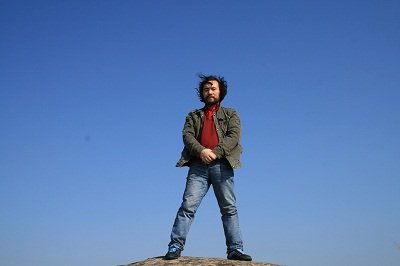
Yamantaka(1)
Yamantaka is one of yidam of the Anuttara Yoga section and belongs to the father tantra. It is pronounced “Dorje Jikche” in Tibetan, meaning “Wrathful Vajra”. It is translated as Great Formidable Moral Bright King, and is also called “Yama Enemy”, and “Terrible Vajra”. There are several sayings about the origin of Yamantaka. Some say the Vajra Yamantaka is the manifestation of Manjushri, and some say its true form was originally Brahma, entering-anywhere, big freedom, virgin girl, and the sun etc, later subdued by Buddha and turned into the form of a water buffalo, its many images hiding under the feet of Yamantaka. Tibetan Buddhism recognizes the first saying.
There is a book called The Light of Yamantaka, recording the struggle with conservative power when Yamantaka was first preached into Tibetan areas. The great achiever, Reluoduojizha, killed many people who blocked the preaching of Yamantaka in Tibetan areas.
Some say that “vajra” indicates wisdom, and “great formidable morality” indicates skilfulness, Bodhi-chitta, having no difference between empty nature and great merciful heart, is Vajra Yamantaka. Its image is 9 headed, 36 armed and 16 legged. The 9 wrathful heads represent 9 kinds of corresponding sutra to subdue the Yama king. There are 3 eyes in a face, representing eyes that are all seeing, and also representing the possession of the wisdom of past, present and future. The central face is water buffalo shaped, black, and represents subduing the Yama king. The hair points up, meaning toward Buddha hood. The tips of the two horns point upwards, representing the two truths. He wears a skull treasure crown, with hair divided into five buns, appearing slightly angry but with mercy inside anger. There are three angry faces below right horn, all with 3 eyes opening wide, fierce teeth exposed, tongue rolled, hair spread angrily like fire and beard and eyebrows bursting like flames. The central face is blue, the one on the right is red, and the face on the left is yellow, symbolizing the three moral abilities of anger, power, and quiet. There are also three heads on the left, the central head is white, the head on the right is grey, and the head on the left is black-grey in colour, symbolising purity, death and anger. There is a head up from the centre, it is red, symbolizing the human-eating night ghost, named “Canbu”. The head at the very top is yellow, showing the natural image of Manjushri, representing mercy, peace and wisdom. The jade-like stone is a black snake, threading through 50 human heads as necklace, their eyes rotate and flesh blood bleeds. Human bone as jade-like stone, his abdomen is big. The right leg is bent, the left leg extends, standing powerfully.


